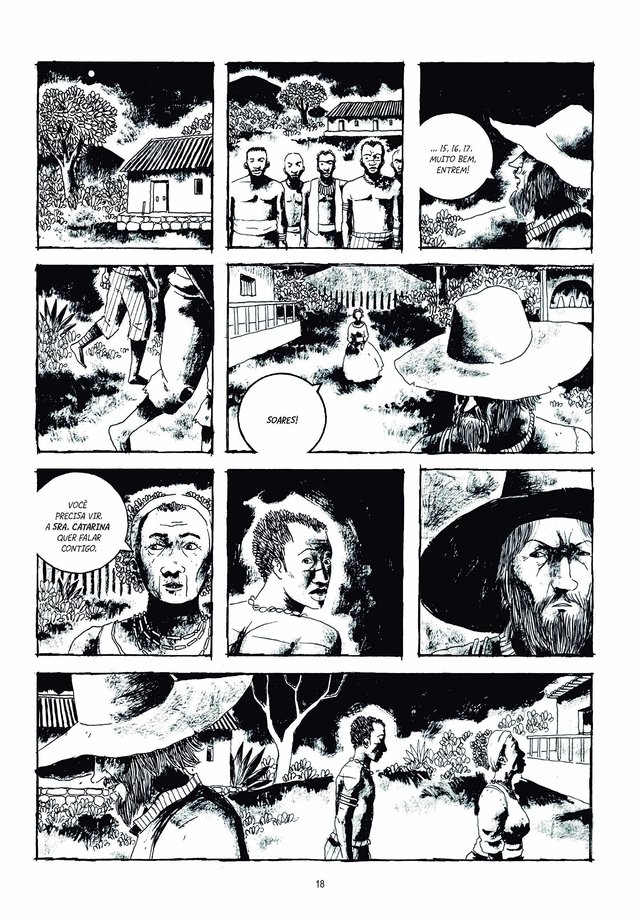

Still, D'Salete's story is impressively comprehensive. Despite historians' best efforts, most of the documentation we have about the mocambos comes to us from the point of view of the slaveowning Portuguese colonists.

The mass of supporting references also has the paradoxical effect of highlighting just how little we can know about these communities and their people. These, along with existing fictional treatments he mentions in the afterword (including three other graphic novels), attest to centuries of fascination with the mocambos. comprised more than 20,000 people." ("Angola Janga," or "Little Angola," was the inhabitants' name for it.) D'Salete gets the 20,000 number, along with the rest of his information about the settlements, from a huge collection of sources he lists at the end of the book and references throughout.

Working in black and white, mixing nonfiction and fiction, D'Salete aims to capture the lives and conflicts of the vast spectrum of individuals the mocambos touched: slaves, runaways, slave hunters, free-born village dwellers and conflicted leaders defying astonishing odds to keep their people free.ĭ'Salete focuses on Palmares, a collection of more than a dozen settlements that "at its peak. In this massive graphic novel, D'Salete relates the history of the villages that provided havens for freedom-seeking runaways - and presented a perennial threat to the whole institution of slavery in Brazil. And such is the case with the stories that make up Marcelo D'Salete's Angola Janga. Such is the case with innumerable tales of the mocambos, communities of runaway slaves that took root in the jungles of Brazil in the 1600s. Sometimes the greatest stories are forever out of reach.


 0 kommentar(er)
0 kommentar(er)
